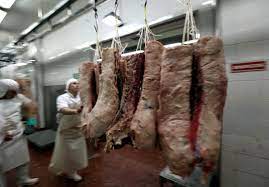Dubai July 24 2022: Pakistan based meat exporters and local livestock industry could gain export markets of China and Middle East as Australia and Indonesia livestock is attacked by Foot and Mount disease.
Australia is on high alert for foot-and-mouth in its cattle herds after traces of the virus were found on imported animal products. Indonesia, where thousands of Australians holiday each month, is currently dealing with an outbreak of the disease.
Though Australia accounts for only 4% of global beef production, the country is a top shipper — comprising about 13% of world exports. Depending on the extent of any potential spread, an outbreak could result in the culling of animals. Authorities may deploy vaccines to contain the virus, but such a strategy often leads to a longer imposition of trade restrictions in FMD-free countries with Australia prevented from accessing overseas markets.Either move is likely to dent Australian export volumes to some degree, and major markets in China, Japan and South Korea could see the most impact. An outbreak would also taint Australia’s export reputation, and the effect could linger for years after livestock herds recover from the disease.
Pakistan exported 77,480 tonnes (worth $342 million) meat and meat preparations in Fiscal Year 2022, which runs from July to June, against 95,648 tonnes ($331 million) a year ago. However, the average per tonne price (APT) was increased to $4,424 as compare to low of $3,473 in Fiscal Year 2021.
Prime Minister Anthony Albanese said the government is doing everything it can to stop the foot-and-mouth disease from entering Australia as an outbreak among cattle herds would have a severe impact on the economy.
“It’s important to note that Australia is foot-and-mouth disease free, that our products continue to be available to the world, and it’s important that we try to do everything that we can to maintain that position,” Albanese said in a Sunday interview on Sky News.
Albanese said biosecurity measures introduced at the border by the government, including the use of sanitation foot mats, have the support of farming groups.
“These are the strongest-ever measures introduced by an Australian government — ever — in terms of biosecurity when it comes to foot-and-mouth disease,” Albanese said.
An outbreak of the disease would pose a serious threat to Australia’s A$32 billion ($22 billion) livestock industry, and a widespread occurrence could have an estimated direct economic impact of A$80 billion.
What is foot-and-mouth?
Foot-and-mouth disease (FMD) is a highly contagious virus that affects cattle, sheep, goats and pigs. It is characterized by fever and blister-like sores on the tongue and lips, in the mouth, on the teats and between the hooves. The prevalence of the disease has the potential to decimate herds.
The disease is often spread by humans via their shoes, clothes and luggage — and particles can even live in people’s noses, where they may survive for up to 24 hours. The virus can also be transmitted via contaminated meat and other animal products, and survive in the environment for several weeks. It is considered one of the most important livestock diseases in the world, and can potentially cause billions of dollars of losses each year.
Where is it a problem now?
The World Organisation for Animal Health says the disease is endemic across swathes of Asia, and most of Africa and the Middle East. Right now, there’s growing concern over the spread in Indonesia after the country reported the disease in May and the virus swept through the nation’s cattle herds.
Surrounding nations like Australia are particularly alarmed at the proliferation of the virus, which has reached the tourist hot spot of Bali. Each month, thousands of Australians return from holidaying on the island. New Zealand, which has a large livestock population, also remains on high alert.











